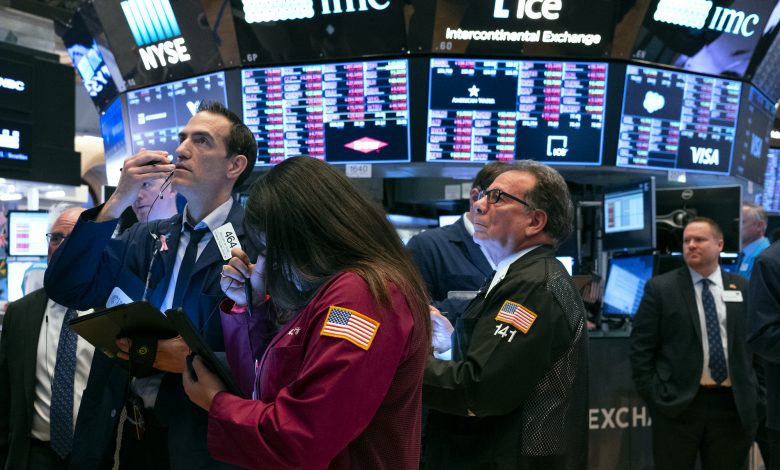
Can the second wave of COVID-19 crush oil markets?
هل يمكن للموجة الثانية لكوفيد-١٩ تحطيم أسواق النفط؟
The oil price rally may have come to an end, with the long-feared “second wave” of coronavirus infections having now arrived, posing renewed threats to the global economy.
A new outbreak of infections in Beijing over the weekend prompted a “war-time” response from the Chinese government, a top city official said. Schools, sports venues, malls and supermarkets saw another round of closures and checkpoints.
Across the U.S., infections are rising in many states, even as Americans display weariness and reluctance to continue with mask wearing and social distancing guidelines. However, unlike in March and April where the epicenter of the pandemic was New York, the new explosions of cases are more concentrated in the south. On Saturday, the U.S. reported almost 26,000 new cases, the highest total in nearly a month.
“The second wave has begun,” William Schaffner of the Vanderbilt University School of Medicine, said on CNBC. The pandemic never really went away, so it is not as if there is a discrete first and second wave. But the resurgence in infections in recent days caused a selloff in financial markets.
Oil prices retreated further on Monday, with prices down more than 10 percent in less than a week. “Concerns that we may be seeing the beginning of a second wave of the pandemic are dominating trading floors this morning across the globe, from Beijing to Florida,” Head of Oil Markets at Rystad Energy, Bjornar Tonhaugen, said in a statement. “Markets move in waves of fear and greed, and after greed has enjoyed a long joy ride, fear has started sprouting again.”
The IMF is expected to cut its global economic forecast when it releases new figures on June 24. The Fund said in April that global GDP may contract by 3 percent this year. “This pandemic has been, and continues to be, like dominoes falling,” IMF managing director Kristalina Georgieva said on Saturday, pointing to the ongoing spread of the virus around the world. “And we all know that it is not over until it is over everywhere.” China’s industrial output in May rose by 4.4 percent from a year earlier, a smaller-than-expected gain that fueled more concern about economic rebound.
The Dallas Fed President Robert Kaplan said that the health of the economy hinges not just on federal stimulus and reopening businesses, but also on public health measures, including widespread mask wearing and other containment measures. “The extent we do that well will determine how quickly we recover. We’ll grow faster if we do those things well,” Kaplan said on CBS. “And right now, it’s relatively uneven.”
Meanwhile, the piling up of oil sitting in storage from the last few months boggles the mind. China alone is set to add 440 million barrels to storage in the first six months of the year, according to IHS Markit, the largest increase by any country ever recorded. That buildup in China actually provided a boost to oil prices, offering a source of demand during the depths of the downturn. But it’s not clear that the rate of storage injection can continue.
Adding to the oil market’s woes is the fact that prices may have rallied too far to begin with, even before recent data shows an uptick in Covid-19 infections. “The scale of the sell-off can be explained by the excessive optimism before,” Commerzbank wrote in a note on Monday, pointing to the speculative bets on rising oil prices. “Net long positions held by money manager in WTI on the NYMEX rose further in the week to 9 June and at nearly 400,000 contracts found themselves at their highest level since July 2018.”
The bank added that oil markets have been “deaf in one ear,” focusing only on positive news such as U.S. shale production declines and OPEC+ output cuts while ignoring red flags. The coronavirus never went away and is now spreading to new areas. Brazil recently moved into second place in terms of the number of total deaths from the virus.
“[T]he outlook for the oil market is likely to become gloomier again due to the weaker economic data and concerns about a second wave of the Covid-19 pandemic,” Commerzbank added. “Demand outside China remains weak, which is why we expect prices to decline further in the short term.”
By Nick Cunningham of Oilprice.com
Source: oilprice
الدوحة – الشرق:
يبدو أن ارتفاع أسعار النفط قد وصل إلى نهايته مع “الموجة الثانية” من عدوى فيروس كورونا التي طال أمدها، مما يفرض تهديدات متجددة على الاقتصاد العالمي، وفي تقرير نشره موقع “أويل برايس” الأميركي، قال الكاتب نيك كننغهام إن مسؤولا صينيا صرّح بأن تفشي العدوى من جديد في بكين دفع الحكومة إلى استجابة “زمن الحرب” لتشهد بذلك المدارس والملاعب الرياضية ومراكز التسوق والمحلات التجارية الكبرى جولة جديدة من تدابير المراقبة والغلق، ويضيف الموقع في التقرير أن معدل الإصابات في جميع أنحاء الولايات المتحدة بصدد الارتفاع، وذلك مع عزوف الأميركيين عن ارتداء الأقنعة والتقاعس في الالتزام بإرشادات التباعد الاجتماعي، على عكس مارس وأبريل الماضيين، حيث كانت نيويورك بؤرة تفشي الوباء، وتركزت الانفجارات الجديدة لحالات الإصابة في الجنوب.
موجة ثانية
وقال بيورنار تونهوغن رئيس أبحاث سوق النفط في مؤسسة “ريستاد إنرجي” في بيان له إن “المخاوف من مواجهة موجة ثانية من الوباء تسيطر على أسس التجارة في جميع أنحاء العالم، بدءا من بكين وصولا إلى فلوريدا، الأسواق تتخبط في موجات من الخوف والجشع، وبدأت تشعر بالتهديد مرة أخرى”، يشار إلى أن أسعار خام برنت زادت أمس الجمعة فوق 42 دولارا للبرميل بعد امتثال الدول لاتفاق تخفيضات الإنتاج، لكنها تراجعت بشكل كبير عن مستويات بلغتها في وقت سابق من الجلسة، وذلك على خلفية مخاوف من أن استمرار انتشار فيروس كورونا المستجد قد يقوض التعافي الاقتصادي للولايات المتحدة، ومن المتوقع أن يخفّض صندوق النقد الدولي توقعاته الاقتصادية عندما يصدر بيانات جديدة في 24 يونيو، وكان قد أعلن في أبريل الماضي أن الناتج المحلي الإجمالي العالمي قد ينكمش بنسبة 3% هذا العام، وصرحت المديرة التنفيذية للصندوق كريستينا جورجيفا السبت الماضي بأن هذا الوباء كان ولا يزال ينتقل إلى البلدان بشكل تسلسلي ومستمر، مع إدراك أن الوباء لن يختفي تماما “حتى نضمن خلو جميع البلدان منه”، يشار إلى أن الناتج الصناعي الصيني ارتفع في مايو بنسبة 4.4% مقارنة بالعام الماضي، وهو ما يعتبر مكسبا أقل من المتوقع أدى بدوره إلى تنامي القلق بشأن الانتعاش الاقتصادي، ويرى روبرت كابلان رئيس نظام الاحتياطي الفدرالي في دالاس أن صحة الاقتصاد لا تعتمد فقط على التحفيز الفدرالي وإعادة فتح المشاريع التجارية، وإنما أيضا الالتزام بتدابير الصحة العامة، بما في ذلك ارتداء الأقنعة على نطاق واسع وغير ذلك من تدابير الاحتواء، وفق ما يذكر التقرير نفسه، كما اعتبر في تصريح لشبكة “سي بي إس” بأن حسن التقيد بهذه التدابير سيحدد مدى سرعة التعافي “وسوف ننجح في التعافي بسرعة في حال التزمنا بهذه الأمور بشكل جيد، وفي الوقت الحالي يعتبر مدى الالتزام متفاوتا نسبيا، بحسب تقرير للجزيرة نت.
اضطراب أسواق النفط
وعاد الكاتب منبها إلى أن النفط المُخزن من الأشهر القليلة الماضية يعد أمرا محيرا، ووفقا لمؤشر “آي إتش إس ماركت” من المقرر أن تضيف الصين وحدها ما يعادل 440 مليون برميل إلى قدرة التخزين الأشهر الستة الأولى من العام، وهو ما يعتبر أضخم زيادة تسجلها أي دولة على الإطلاق، وأدى هذا التراكم في الصين إلى تعزيز أسعار النفط، حيث وفر مصدرا للطلب خلال أوج فترة الانكماش، ولكن من غير الواضح ما إذا كان ضخ النفط إلى محطات التخزين يمكن أن يستمر بالمعدل ذاته، كما يقول التقرير، ويُضاف إلى مشاكل سوق النفط، حقيقة أن الأسعار قد تكون ارتفعت كثيرا في البداية، حتى قبل أن تُعلن البيانات الأخيرة عن ارتفاع في حالات الإصابة بفيروس كوفيد-19، وقد كتب البنك التجاري الألماني في مذكرة الاثنين الماضي في إشارة إلى رهانات المضاربة على ارتفاع أسعار النفط أنه “بوسعنا أن نفسر حجم البيع بالتفاؤل المفرط السابق لأوانه”.
وأضاف البنك الألماني أن أسواق النفط مضطربة بسبب تركيزها فقط على الأخبار الإيجابية مثل انخفاض إنتاج النفط الصخري بالولايات المتحدة، وقرار تحالف أوبك بلس خفض الإنتاج، متجاهلة إشارات التحذير، وبحسب موقع أويل برايس، حذر التجاري الألماني من أنه من المرجح أن تصبح التوقعات المستقبلية لسوق النفط أكثر قتامة مرة أخرى بسبب البيانات الاقتصادية الضعيفة والمخاوف بشأن مواجهة موجة ثانية من جائحة كوفيد-19، واختتم التقرير بالقول “عموما لا يزال الطلب خارج الصين ضعيفا، لهذا من المتوقع انخفاض الأسعار بشكل أكبر على المدى القصير”.
المصدر: al-sharq



